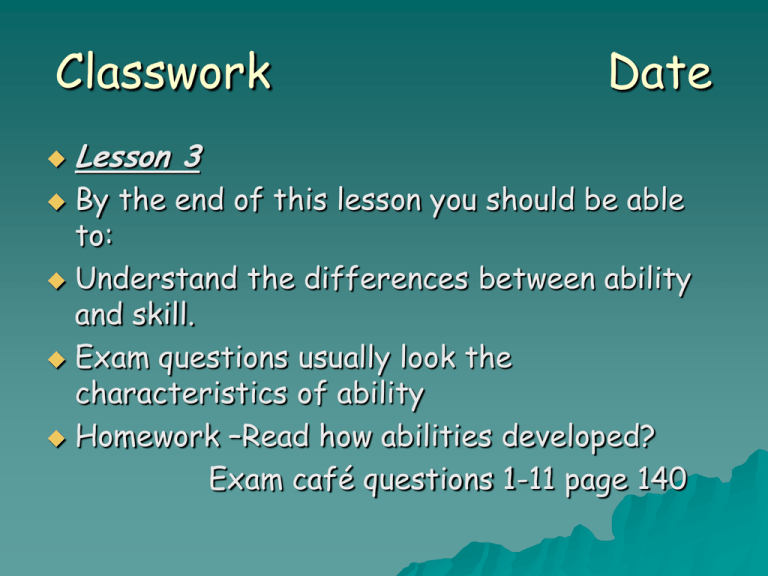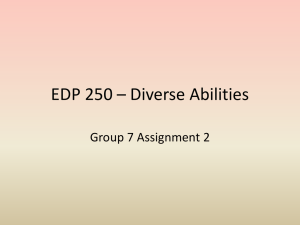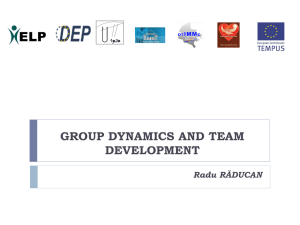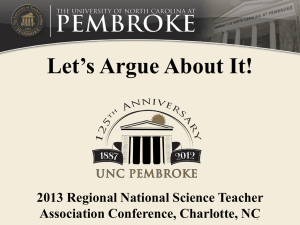Lesson 3 Abilites
advertisement

Classwork Date Lesson 3 By the end of this lesson you should be able to: Understand the differences between ability and skill. Exam questions usually look the characteristics of ability Homework –Read how abilities developed? Exam café questions 1-11 page 140 Characteristics of Ability Innate/genetically determined Stable and enduring Support skills Abilities are seen as being building blocks helping us to learn and develop skills. For example: to perform a handstand you must have the strength in your arms to support your body weight as well as the balance to keep your legs above your head. Definition of ability Schmidt says that ability is ‘an inherited, relatively enduring, stable trait that underlies or supports various kinds of motor and cognitive activities, or skills. Abilities are thought of as being largely genetically determined and essentially unmodified by practice or experience.’ Bull states: are usually thought of as stable and enduring traits that underpin skills and contribute to the speed with which individuals learn psychomotor skills and to the quality of their performance.’ ‘Abilities Task Take one practical activity. List the abilities required to become skilful in this activity. Explain why a performer cannot become a very skilful performer without having ability. Psychologists differ in their opinion as to whether abilities can be developed. It is thought that abilities develop through maturation (& degenerate through aging), are modified through experience but are stable & enduring. In other words, if you are born with low levels of an ability you will be able to modify it slightly but you will never have a high level of that ability. Types of ability It should be stressed that different psychologists use different ways id identifying abilities, and different terminology to describe them. There is no definitive list of abilities. Fleishman (1972) Who developed a taxonomy of human perceptual motor abilities; he identified eleven identifiable & measurable perceptual motor abilities; he also identified nine physical proficiency abilities (gross motor abilities) Stallings (1982) Who identifies abilities on the basis that they have been identified by other psychologists, can be developed & assessed & are relevant to physical education. Two types of ability Gross motor abilities e.g. dynamic strength, static strength, explosive strength, stamina, extent flexibility, dynamic flexibility, gross body co-ordination, gross body equilibrium, trunk strength. Psychomotor abilities e.g. multi limb coordination, response orientation, reaction time, speed of movement, finger dexterity, manual dexterity, rate control, aiming Measurement of abilities There are many standard tests for the measurement of ability. Reaction ruler Sit and reach Stroke stand Task Complete the stroke stand test and analysis results.











